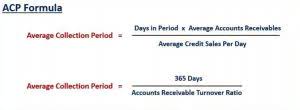Bookkeeping
Understanding the OODA Loop in Decision-Making: A Powerful Tool for Success

This may involve using sensors, intelligence sources, or simply paying close attention to the world around you. The more accurate and timely the information, the better the decision-making process will be. In the world of decision-making, the ability to respond quickly and effectively to changing circumstances is crucial. Air Force Colonel John Boyd, provides a valuable framework for making decisions in dynamic and often high-stress environments. It stands for Observe, Orient, Decide, and Act, and it has been widely adopted in various fields, including the military, business, and sports. This article explores the OODA Loop and how it can be applied to enhance decision-making processes.
Let’s walk through the standard framework for decision-making that will help you and your team pinpoint the problem, consider your options, and make your most informed selection. Here’s a closer look at each of the seven steps of the decision-making process, and how to approach each one. Emergency medical services (EMS) have reported a higher use of services over the https://www.bookstime.com/ past decades, increasing up to 39.8% over ten years [1,2,3]. With the general growth in EMS use, there is also an increase in the number of patients who receive ambulance care without conveyance. In the context of non-conveyance, the patient receives examination and treatment on scene, is discharged on scene, or may be referred to other healthcare facilities [4, 5].
Reducing risk and setting boundaries
Decision frameworks revolve around principles, procedures, and practices for proceedings from information and desires to choices that convert into favorable outcomes. In case you are also curious about the right decision-making framework, this post will guide you comprehensively. Once you have observed and oriented, you can move on to the “Decide” phase. The decision should be based on the information gathered in the Observe phase and your understanding of the situation from the Orient phase. Boyd emphasized the importance of making decisions quickly and decisively, as hesitation can lead to missed opportunities or even failure.
- Though you are getting closer to the right decision, you can never be too cautious about the risks involved and how much risk you can allow yourself to take.
- Patients with an elevated risk (predicted probability ≥2.5%) underwent additional medical record review by the research team to determine eligibility for thromboprophylaxis.
- When social support of the patient or a district nurse is present on scene, EMS professionals are more likely to decide to non-conveyance of the patient [34].
- Then, we compute the weighted score (WS) of each alternative based on the constructed SMX and the obtained OWs of the attributes.
- The resource management feature provides users the visibility who is busy, and who is not, in real-time.
- It also includes assessing your own capabilities, values, and goals, which will shape your response.
- 300 years later, we use his mathematical model to do all sorts of things, from creating AIs to mapping how gossip spreads.
If it was a perfect report card, then it’s just a matter of documenting what works and ensuring others understand how they can use it themselves when the next big decision needs to be made. Developed at Square, the SPADE framework is also predicated on breaking down each step of the decision-making process, so it is clear to everyone what’s happening, who’s doing what, and why a decision was reached. In this matrix, each row is for a particular task, and there is a column for each person/role in the organization (i.e. project manager, engineering manager, developer, sales executive). Decisions are important, but everyone has other things they need to do, too. With a scalable model for decision-making, team members will spend less time deliberating and more time executing without sacrificing strategic thinking. Check out my in-depth definition of RAPID decision-making framework here.
Business Guides
Remember that sometimes a quick decision is more important than ‘the right’ decision, and that at other times, the reverse is true. The important aspect is to go through all the stages in turn, even if only to decide that they are not decision making framework relevant for the current situation. After a decision is made, each participant must commit support out loud. It takes coordination, but it’s important to pull together all the consultants that have been involved in the decision.
With regard to the competencies of EMS professionals, a meta-analysis showed insufficient evidence to support the determination of the medical necessity for ambulance transport by EMS professionals [10]. These patients were included in the intervention group in the primary intention-to-treat analysis but were not included in the as-treated analysis; both analyses failed to show benefit of the intervention. Secondary as-treated analyses were also conducted, considering whether treatment recommendations were followed by the primary clinical team. Swelling stockpiles of data, advanced analytics, and intelligent algorithms are providing organizations with powerful new inputs and methods for making all manner of decisions. Corporate leaders also are much more aware today than they were 20 years ago of the cognitive biases—anchoring, loss aversion, confirmation bias, and many more—that undermine decision making without our knowing it. Some have already created formal processes—checklists, devil’s advocates, competing analytic teams, and the like—to shake up the debate and create healthier decision-making dynamics.

